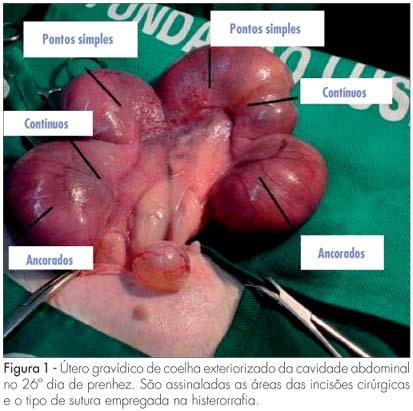Revista Brasileira de Ginecologia e Obstetrícia. 2007;29(12):633-638

PURPOSE: to compare macro and microscopically, surgical uterine sutures in female rabbits, after caesarean section utilizing separate, continuous and continuous anchored suture stitches. METHODS: three New Zealand female rabbits in their first pregnancy were used. The caesarean section was carried out at the 26th day of gestation and three incisions were performed in each uterus. The hysterorrhaphy was performed with a 00 Vicryl® thread, and a different suture technique was employed for each incision. Total hysterectomy and adnexectomy were done at the 60th day post-delivery with the preservation of eventual adhesions for the evaluation of the surgical scars. The extent of scar retraction, amount of fibrin deposit and the suture integrity were evaluated through macroscopy. For the evaluation through microscopy, hematoxylin eosin technique was used for cellular colorimetry, and Masson’s trichrom to evidence collagen. The statistical non-parametric Friedman’s test was employed for the matching hypothesis, and Fisher’s exact test to verify the homogeneity of the techniques (level of significance: 5%). RESULTS: a total of 18 scars were obtained (six scars per suture). The following mean values were obtained for the longitudinal (0.5/0.4/0.5, p=0.069) and transversal retraction degrees (0.3/0.4/0.3, p=0.143) respectively for separate, continuous and continuous anchored suture techniques. All sutures presented regular fibrin deposit, no adhesions and integral absorption of the stitches. The mean value of the blood vessels (158.5/139.3/172.1; p=0.293), fibroblasts (351.6/345.8/354.3; p=0.311) and of collagen percentage (44.0/45.5/48.5; p=0.422) were calculated through microscopy, respectively for separate, continuous and continuous anchored suture techniques. CONCLUSIONS: the type of hysterorrhaphy technique of caesarean section in female rabbits did not generate any significant statistical difference in the macroscopic and microscopic parameters evaluated.
Search
Search in:


Comments